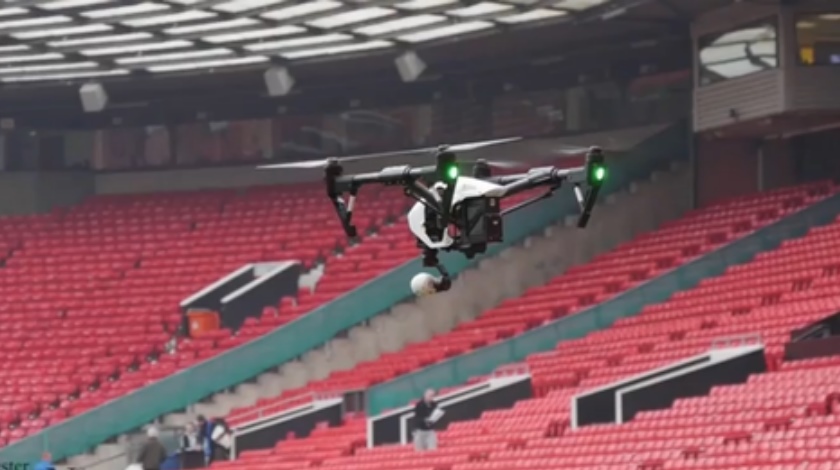Photo: manchestereveningnews.co.uk
Reading Time: 2 minutesWe don’t tend to think about them much but unexploded landmines are a deadly problem looming over large populations all over the world.
According to CARE, more than 110 million landmines lay buried in the ground around the world, resulting in 70 lives lost or injured per day at any given location.
Now, a British university team has developed an innovative to find and eradicate landmines – a mapping drone.
To raise awareness of the problem, researchers at the University of Bristol piloted a prototype drone over Old Trafford, the home stadium of football powerhouse Manchester United on April 4 – UN International Day of Mine Awareness.
The drone, a research project spearheaded by Bristol’s physics department, rapidly mapped the football field to demonstrate the accuracy of the UAV’s airborne sensor array in the event of land-mine removal operation.
“Flying over the Manchester United pitch [demonstrates] that we can map a football pitch-sized area of land in two hours or less,” John Fardoulis, project researcher Interface Analysis Centre in Bristol’s School of Physics in a press release.
“Clearing a minefield that size can currently take months, and the maps our drones will generate should help de-miners focus on the places where mines are most likely to be found,” he added. “This will speed the process up and make the demining significantly safer.”
In addition to giving mine removal experts a new tool to examine high-resolution imagery over potential mine fields, the Bristol team hopes to enhance the drone program by adding hyperspectral imaging techniques.
The technology will allow users to examine a separate image of an area at different wavelengths along the color spectrum.
“These images could detect the effects explosive chemicals have on vegetation as a means of identifying mined areas,” Fardoulis said.
“Living plants have a very distinctive reflection in the near infrared spectrum, just beyond human vision, which makes it possible to tell how healthy they are,” said research lead John Day.
“Chemicals in landmines leak out and are often absorbed by plants, causing abnormalities. Looking for these changes might be a way of discovering the whereabouts of mines.”
Day added that “infrared light can also assist detecting man-made objects on the surface of mine fields, as they do not produce this infrared reflection.”
“Drones taking infrared pictures to map suspected danger zones may provide a quick and safe way to tell if an area is likely to be hazardous.”

